-
 Bitcoin
Bitcoin $117900
0.31% -
 Ethereum
Ethereum $3766
0.28% -
 XRP
XRP $3.176
-0.31% -
 Tether USDt
Tether USDt $1.000
0.00% -
 BNB
BNB $795.6
1.51% -
 Solana
Solana $186.8
-1.09% -
 USDC
USDC $0.9999
-0.01% -
 Dogecoin
Dogecoin $0.2353
-1.33% -
 TRON
TRON $0.3226
1.49% -
 Cardano
Cardano $0.8172
-1.08% -
 Sui
Sui $4.178
3.06% -
 Hyperliquid
Hyperliquid $43.05
-3.39% -
 Stellar
Stellar $0.4367
-0.57% -
 Chainlink
Chainlink $18.62
1.47% -
 Hedera
Hedera $0.2828
6.63% -
 Bitcoin Cash
Bitcoin Cash $584.7
5.65% -
 Avalanche
Avalanche $24.81
2.53% -
 Litecoin
Litecoin $112.8
-0.88% -
 UNUS SED LEO
UNUS SED LEO $8.975
-0.08% -
 Shiba Inu
Shiba Inu $0.00001395
-1.07% -
 Toncoin
Toncoin $3.285
-1.05% -
 Ethena USDe
Ethena USDe $1.001
0.01% -
 Polkadot
Polkadot $4.123
0.76% -
 Uniswap
Uniswap $10.49
-0.18% -
 Monero
Monero $326.5
0.14% -
 Dai
Dai $0.9999
-0.02% -
 Bitget Token
Bitget Token $4.576
0.34% -
 Pepe
Pepe $0.00001247
-1.55% -
 Cronos
Cronos $0.1400
3.77% -
 Aave
Aave $295.1
-0.73%
How to find a buying point after the volume is adjusted?
Volume adjustment in crypto trading helps identify buying points by analyzing volume data, using techniques like moving averages and indicators to spot trends and opportunities.
Jun 10, 2025 at 04:42 pm
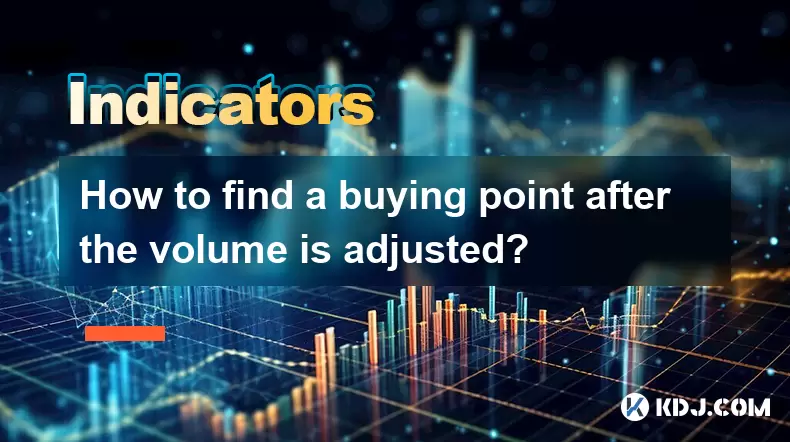
Understanding Volume Adjustment in Cryptocurrency Trading
Volume adjustment in cryptocurrency trading refers to the process of analyzing and interpreting trading volume data to make more informed decisions about when to buy or sell a particular cryptocurrency. Volume, which represents the total number of coins traded within a given timeframe, is a critical indicator that can signal the strength or weakness of a price movement. When the volume is adjusted, traders look for changes in volume patterns that may indicate potential buying or selling opportunities.
Importance of Volume in Identifying Buying Points
Volume plays a crucial role in identifying potential buying points in the cryptocurrency market. High volume often accompanies significant price movements, suggesting strong interest and activity from traders. Conversely, low volume can indicate a lack of interest, which may lead to price stagnation or reversal. By adjusting the volume data, traders can filter out noise and focus on meaningful trends that may signal an optimal buying point.
Techniques for Adjusting Volume Data
To effectively adjust volume data, traders employ various techniques to enhance their analysis. One common method is to use moving averages to smooth out volume fluctuations and reveal underlying trends. Another technique involves volume indicators, such as the On-Balance Volume (OBV) and the Volume-Weighted Average Price (VWAP), which provide additional insights into volume dynamics. By applying these techniques, traders can better identify when volume adjustments indicate a potential buying opportunity.
Identifying Buying Points After Volume Adjustment
After adjusting the volume data, traders can use several strategies to pinpoint the best buying points. One approach is to look for volume spikes that coincide with price breakouts. These spikes suggest a surge in buying interest, which could propel the price higher. Another strategy involves monitoring volume divergence, where the volume trend diverges from the price trend, indicating a potential reversal or continuation. By combining these strategies with adjusted volume data, traders can enhance their ability to find optimal buying points.
Practical Steps to Find a Buying Point After Volume Adjustment
To find a buying point after adjusting the volume, follow these detailed steps:
Gather Historical Data: Begin by collecting historical price and volume data for the cryptocurrency you are interested in. This data can be obtained from various cryptocurrency exchanges or financial data platforms.
Apply Volume Smoothing Techniques: Use moving averages to smooth out the volume data. For instance, apply a 20-day moving average to the volume to identify the general trend and reduce the impact of short-term fluctuations.
Analyze Volume Indicators: Incorporate volume indicators like OBV or VWAP to gain deeper insights into volume trends. For example, an increasing OBV may indicate growing buying pressure, suggesting a potential buying point.
Identify Volume Spikes and Divergence: Look for significant volume spikes that coincide with price movements. Also, pay attention to volume divergence, where the volume trend does not align with the price trend, as this can signal a potential buying opportunity.
Confirm with Other Indicators: Use additional technical indicators, such as the Relative Strength Index (RSI) or Moving Average Convergence Divergence (MACD), to confirm the buying signal. A bullish crossover on the MACD, combined with a volume spike, can strengthen the case for a buying point.
Set Entry and Exit Points: Once you have identified a potential buying point, set clear entry and exit points. Determine the price at which you will enter the trade and the price at which you will exit to secure profits or limit losses.
Execute the Trade: Place your buy order at the identified entry point and monitor the trade closely. Adjust your exit strategy based on real-time market conditions and volume trends.
Using Volume Adjustment in Different Market Conditions
Volume adjustment can be applied effectively in various market conditions, including bull markets, bear markets, and sideways markets. In a bull market, traders can use volume adjustments to identify strong buying opportunities as prices continue to rise. In a bear market, volume adjustments can help pinpoint potential reversal points where the price may start to recover. In a sideways market, volume adjustments can reveal subtle shifts in buying and selling pressure, guiding traders to enter or exit positions at optimal times.
Case Studies of Successful Volume Adjustment Strategies
To illustrate the effectiveness of volume adjustment in finding buying points, consider the following case studies:
Case Study 1: Bitcoin Breakout: In early 2021, Bitcoin experienced a significant breakout, accompanied by a massive volume spike. Traders who adjusted their volume data and identified this spike could have entered the market at an optimal buying point, capitalizing on the subsequent price surge.
Case Study 2: Ethereum Reversal: In mid-2022, Ethereum showed signs of a potential reversal as the volume trend diverged from the price trend. Traders who noticed this volume divergence and adjusted their analysis accordingly could have identified a buying point just before the price began to recover.
Case Study 3: Altcoin Opportunity: In late 2020, an altcoin exhibited a series of volume spikes that aligned with price breakouts. By adjusting their volume data and recognizing these patterns, traders could have entered the market at favorable buying points and profited from the altcoin's upward momentum.
Frequently Asked Questions
Q: How does volume adjustment differ from traditional volume analysis?
A: Volume adjustment involves applying techniques like moving averages and volume indicators to refine raw volume data, making it easier to identify meaningful trends and potential buying points. Traditional volume analysis, on the other hand, typically focuses on the raw volume data without such adjustments.
Q: Can volume adjustment be used for short-term trading as well as long-term investing?
A: Yes, volume adjustment can be applied to both short-term trading and long-term investing. For short-term traders, volume adjustments can help identify immediate buying opportunities based on rapid changes in volume. For long-term investors, adjusted volume data can reveal broader trends and potential entry points for holding positions over extended periods.
Q: Are there any risks associated with relying on volume adjustment for finding buying points?
A: While volume adjustment can enhance trading decisions, it is not without risks. False signals can occur if volume spikes or divergences are misinterpreted. Additionally, market conditions can change rapidly, affecting the reliability of volume-based strategies. Therefore, it is crucial to use volume adjustment in conjunction with other technical and fundamental analysis tools to mitigate risks.
Q: How can I access the necessary data for volume adjustment in cryptocurrency trading?
A: You can access the necessary data for volume adjustment through various cryptocurrency exchanges, such as Binance or Coinbase, which provide historical price and volume data. Additionally, financial data platforms like TradingView or CoinMarketCap offer comprehensive datasets and tools for analyzing volume trends.
Disclaimer:info@kdj.com
The information provided is not trading advice. kdj.com does not assume any responsibility for any investments made based on the information provided in this article. Cryptocurrencies are highly volatile and it is highly recommended that you invest with caution after thorough research!
If you believe that the content used on this website infringes your copyright, please contact us immediately (info@kdj.com) and we will delete it promptly.
- Cryptos to Watch in 2025: Punisher Coin, Chainlink, and the Altcoin Arena
- 2025-07-27 18:30:13
- Bitcoin, Altcoins, Rebound: Navigating the Crypto Comeback Trail
- 2025-07-27 18:30:13
- Ethereum, Bitcoin, and Altcoins: A Shift in Crypto Tides?
- 2025-07-27 19:10:13
- Windtree Therapeutics' Bold BNB Strategy: A $520 Million Crypto Play
- 2025-07-27 19:10:13
- Solana, Staking, and Unilabs: What's the Buzz in the Crypto Space?
- 2025-07-27 16:50:13
- VeChain, HBAR, Remittix: Navigating the Crypto Landscape in 2025
- 2025-07-27 17:10:12
Related knowledge
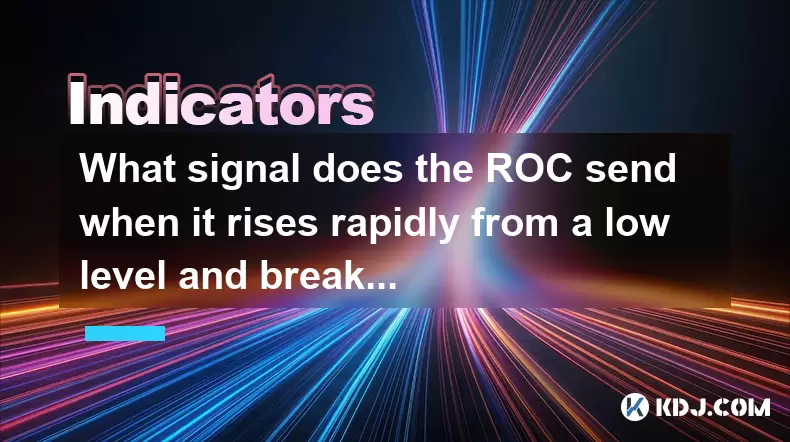
What signal does the ROC send when it rises rapidly from a low level and breaks through the zero axis?
Jul 27,2025 at 10:15am
Understanding the Rate of Change (ROC) IndicatorThe Rate of Change (ROC) is a momentum-based oscillator used in technical analysis to measure the perc...
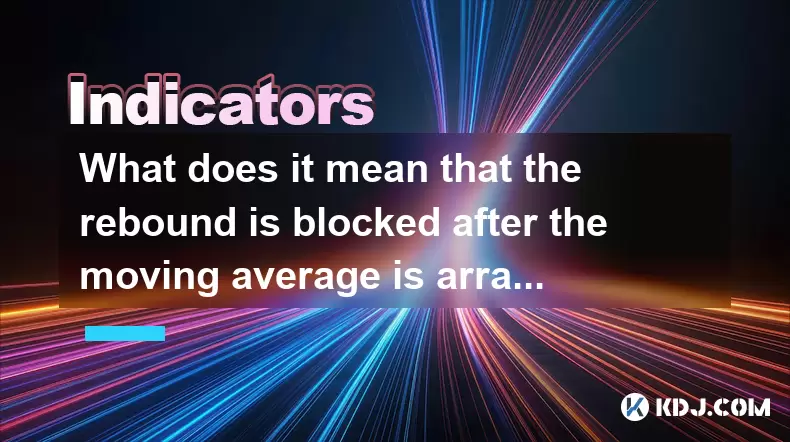
What does it mean that the rebound is blocked after the moving average is arranged in a short position for the first time?
Jul 26,2025 at 10:51am
Understanding the Short-Term Moving Average ConfigurationWhen traders refer to a 'short position arrangement' in moving averages, they are describing ...
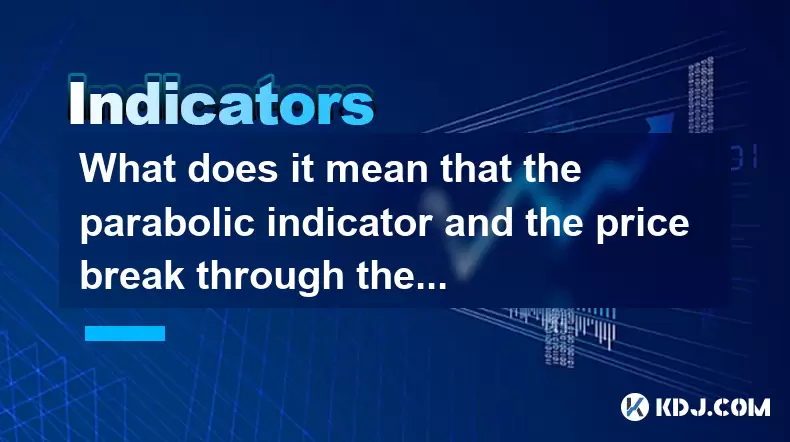
What does it mean that the parabolic indicator and the price break through the previous high at the same time?
Jul 26,2025 at 07:22pm
Understanding the Parabolic Indicator (SAR)The Parabolic SAR (Stop and Reverse) is a technical analysis tool developed by J. Welles Wilder to identify...
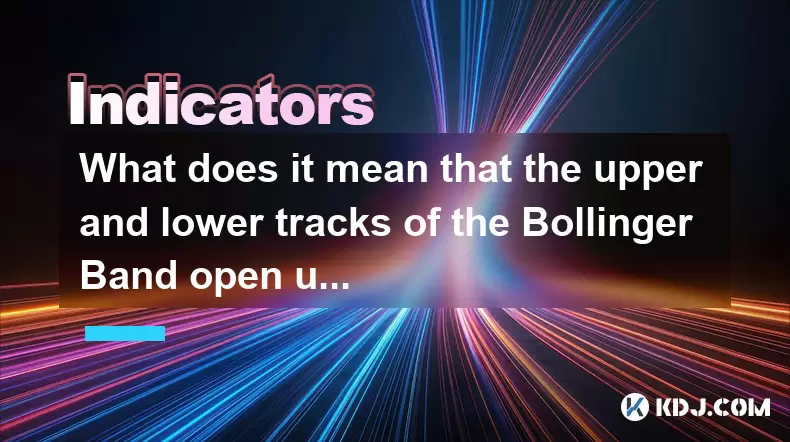
What does it mean that the upper and lower tracks of the Bollinger Band open upward at the same time?
Jul 27,2025 at 02:49pm
Understanding the Bollinger Band StructureThe Bollinger Band is a widely used technical analysis tool developed by John Bollinger. It consists of thre...
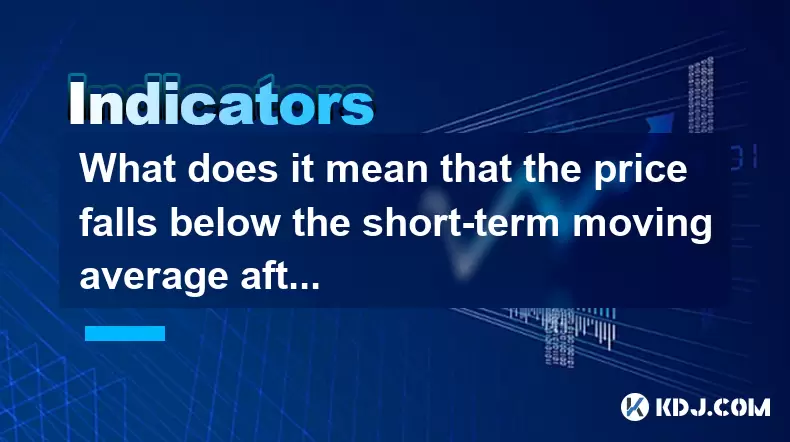
What does it mean that the price falls below the short-term moving average after the RSI top divergence?
Jul 26,2025 at 11:01pm
Understanding RSI Top Divergence in Cryptocurrency TradingThe Relative Strength Index (RSI) is a momentum oscillator widely used in cryptocurrency tra...
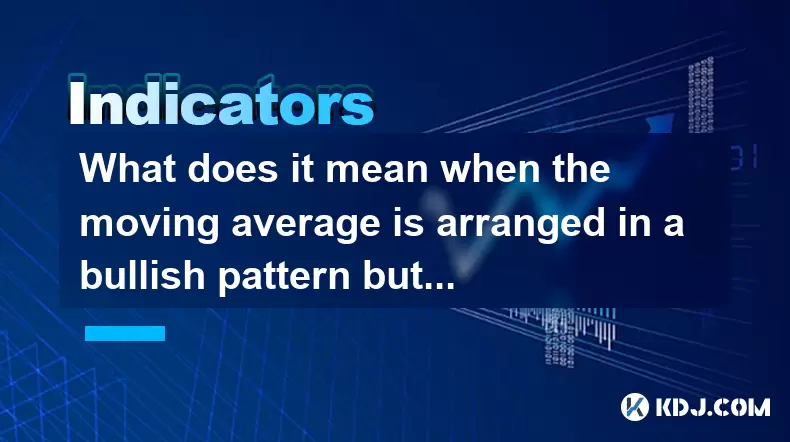
What does it mean when the moving average is arranged in a bullish pattern but the MACD bar is shortened?
Jul 27,2025 at 06:07am
Understanding the Bullish Moving Average PatternWhen traders observe a bullish moving average pattern, they typically refer to a configuration where s...

What signal does the ROC send when it rises rapidly from a low level and breaks through the zero axis?
Jul 27,2025 at 10:15am
Understanding the Rate of Change (ROC) IndicatorThe Rate of Change (ROC) is a momentum-based oscillator used in technical analysis to measure the perc...

What does it mean that the rebound is blocked after the moving average is arranged in a short position for the first time?
Jul 26,2025 at 10:51am
Understanding the Short-Term Moving Average ConfigurationWhen traders refer to a 'short position arrangement' in moving averages, they are describing ...

What does it mean that the parabolic indicator and the price break through the previous high at the same time?
Jul 26,2025 at 07:22pm
Understanding the Parabolic Indicator (SAR)The Parabolic SAR (Stop and Reverse) is a technical analysis tool developed by J. Welles Wilder to identify...

What does it mean that the upper and lower tracks of the Bollinger Band open upward at the same time?
Jul 27,2025 at 02:49pm
Understanding the Bollinger Band StructureThe Bollinger Band is a widely used technical analysis tool developed by John Bollinger. It consists of thre...

What does it mean that the price falls below the short-term moving average after the RSI top divergence?
Jul 26,2025 at 11:01pm
Understanding RSI Top Divergence in Cryptocurrency TradingThe Relative Strength Index (RSI) is a momentum oscillator widely used in cryptocurrency tra...

What does it mean when the moving average is arranged in a bullish pattern but the MACD bar is shortened?
Jul 27,2025 at 06:07am
Understanding the Bullish Moving Average PatternWhen traders observe a bullish moving average pattern, they typically refer to a configuration where s...
See all articles

























































































